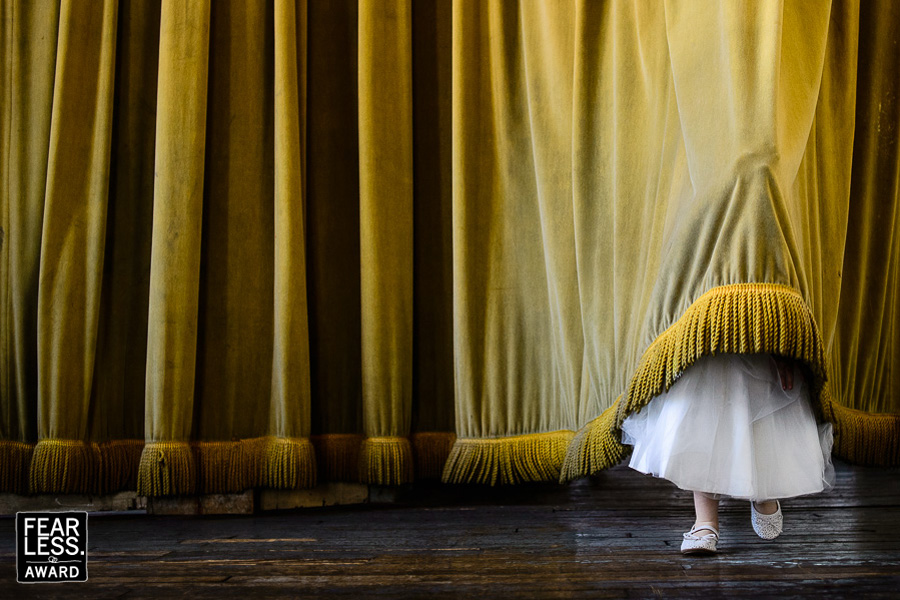As more and more brides and grooms find themselves in search of a photographer who will capture all of their special moments in an artistic way, it can be difficult for them to decipher what is real and what has been staged by the photographer. Not that there’s anything wrong with staging… BUT if you think you are hiring someone who is going to capture your real-life moments, AS they actually happen, being able to tell the difference between the two could be crucial to choosing the right photographer for you. As a top award-winning documentary style Fearless photographer since 2009, here is my list of five tips to help interpret if what you are looking at is an actual real-life moment or something that has been manufactured by the photographer.
1.) How many times have you seen it before? As you sift through the portfolios of multiple “documentary style” photographers, you might find any number of repeat moments. One simple thing to do is to ask yourself, “have I ever seen this happen at a wedding?” Certain moments happen at almost every wedding, such as a first kiss, bride and groom walking back down the aisle, ring exchanges, etc. But, what if it’s something REALLY different? For example, a bride throwing her bra at the camera as she puts the dress on, a bride or groom getting tossed in the air? Have you ever seen these moments occur naturally at a wedding? Of course, real moments can also spin off of staged ones. For example, if they drop the bride attempting the staged moment of throwing her. Most of the time, however, if it’s a total “you can’t even come up with this sh*t” type of moment, it’s probably real. A good example would be this photo taken during “getting ready” of one groomsman drinking champagne out of glass being held by the groom’s foot.

2.) Do the subjects expressions match the moment? Take a look at the subjects faces. Is it a moment where they should look surprised, but instead, they are blank smiling? Are they camera aware (often a dead giveaway)? Is it an easy expression to instruct people to do (i.e. having all the bridesmaids put their hands over their mouth when the bride steps out in the dress). Bare in mind that most people at weddings aren’t professional actors/actresses, so if the expression(s) looks really authentic, the moment probably is too. Expressions are the highlight of this particular shot of a streamer exit from a Jewish ceremony.
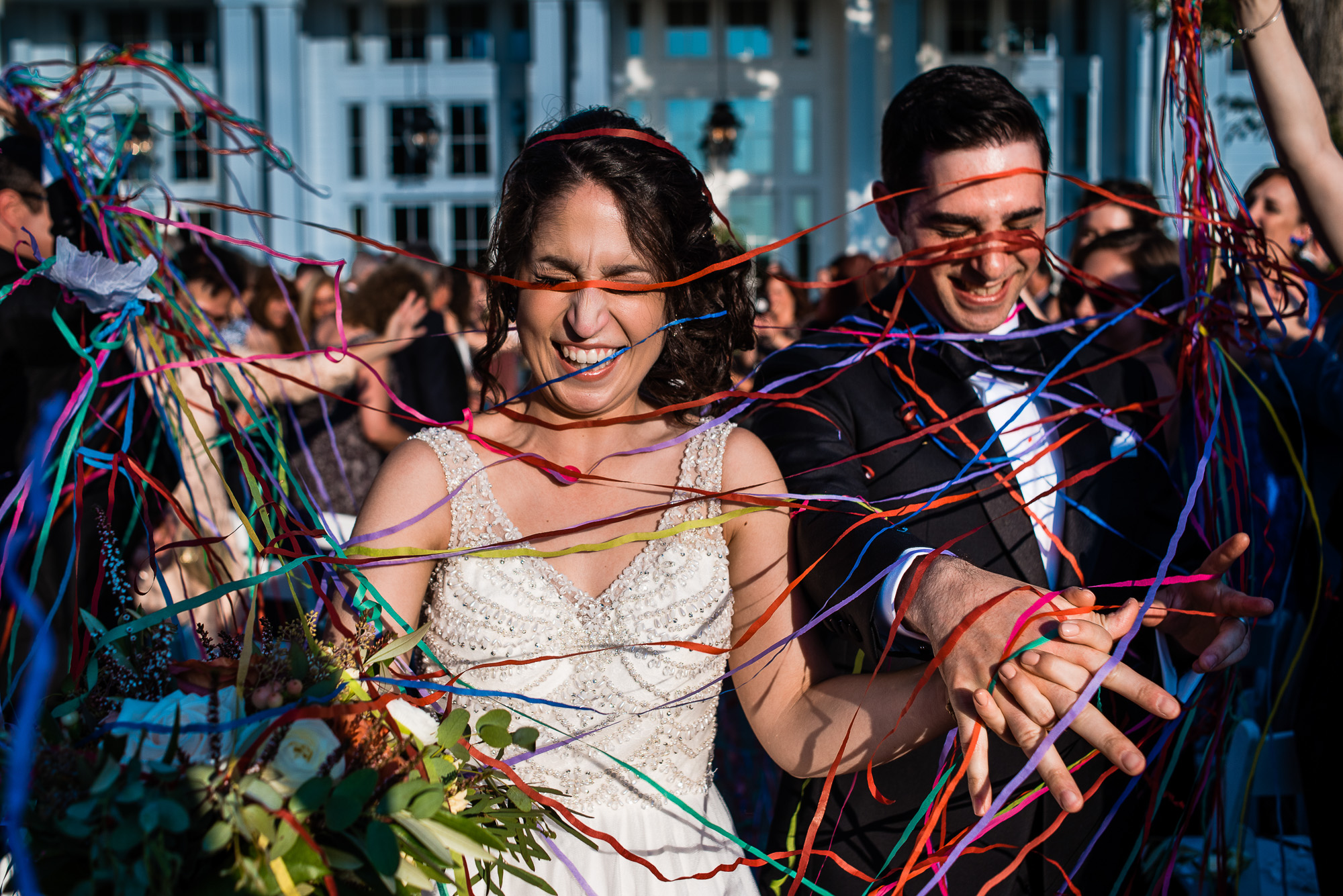
3.) Is the photo just a little TOO perfect? For example, if the subjects or objects in the photo are all spaced at a perfect equal distance to one another, there are no distracting elements or things you wish weren’t in the photo, and everyone is reacting identically (per tip number 2 “bridesmaids faked reaction” example) it might be just a little TOO perfect. Conversely, if 90% of the faces look great but there’s one that’s just sort of “Meh,” that could be an indicator of it being a real moment. To be fair, some moments ARE captured perfectly. Take the photo of the group hug below for example, however, there’s one person whose full face I wish I could see but can’t. If this moment had been staged, I’d have told the subject to move her a head a bit towards the middle to make it just “perfect.” However, I now like that this imperfection lends authenticity to the shot.
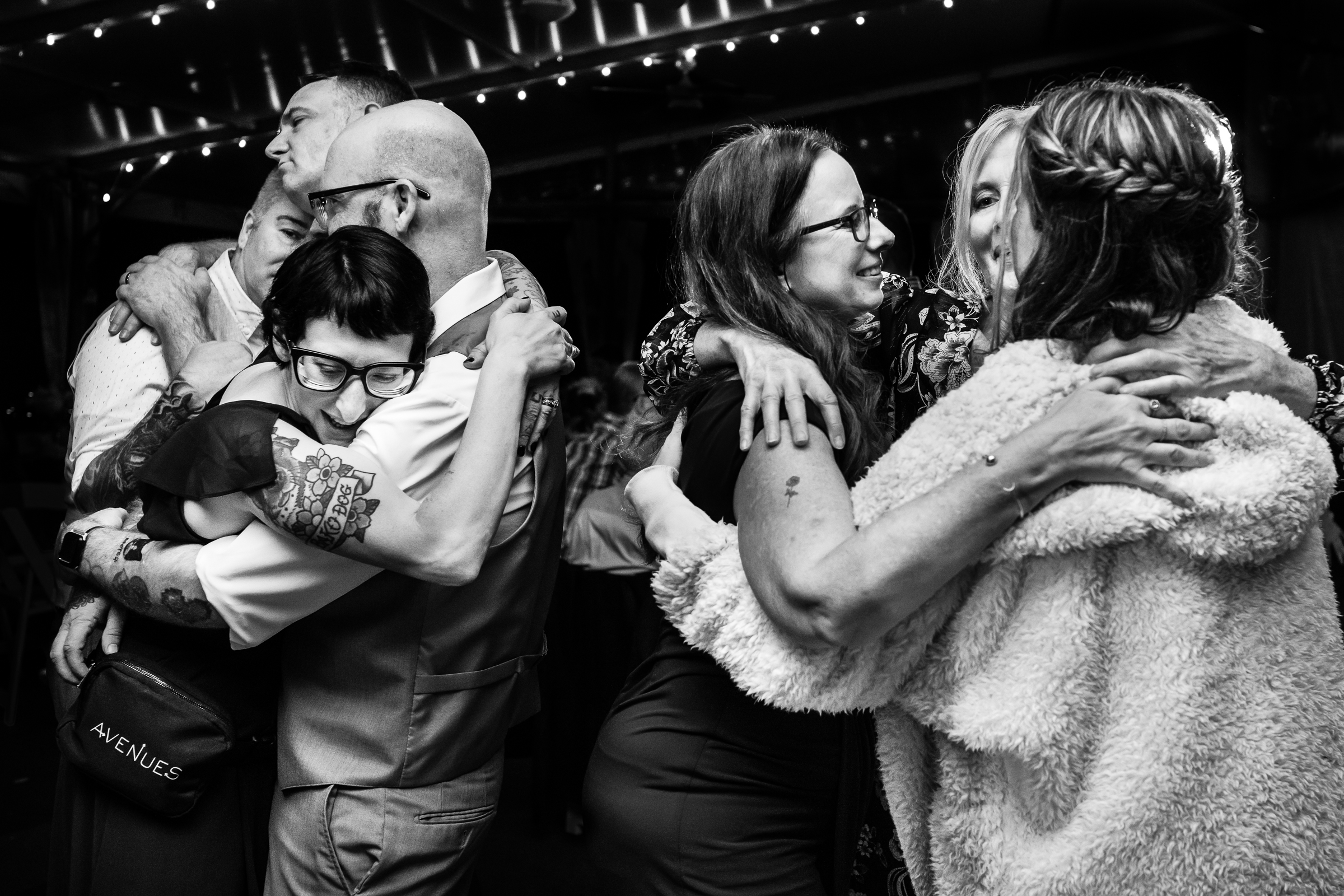
4.) Does the setting match the moment? For example, if it looks like a ring exchange or ceremony photo, is it happening in front of a cross, Chuppah, canopy, or Mundap? If it’s a reception photo where there would typically be a number of people present; is it in a reception space? Are there onlookers reacting? Or does it appear to occur in a vacuum of blackness or whiteness, or out on the lawn somewhere with no one else around? Sometimes backgrounds can truly be perfectly clean or are darkened for being too distracting, but the lack of an appropriate setting for a particular event still gives me pause. For example, the reception setting and onlookers reacting in this photo of a bride falling on the dance floor are a clear indication that this is a real moment in time.
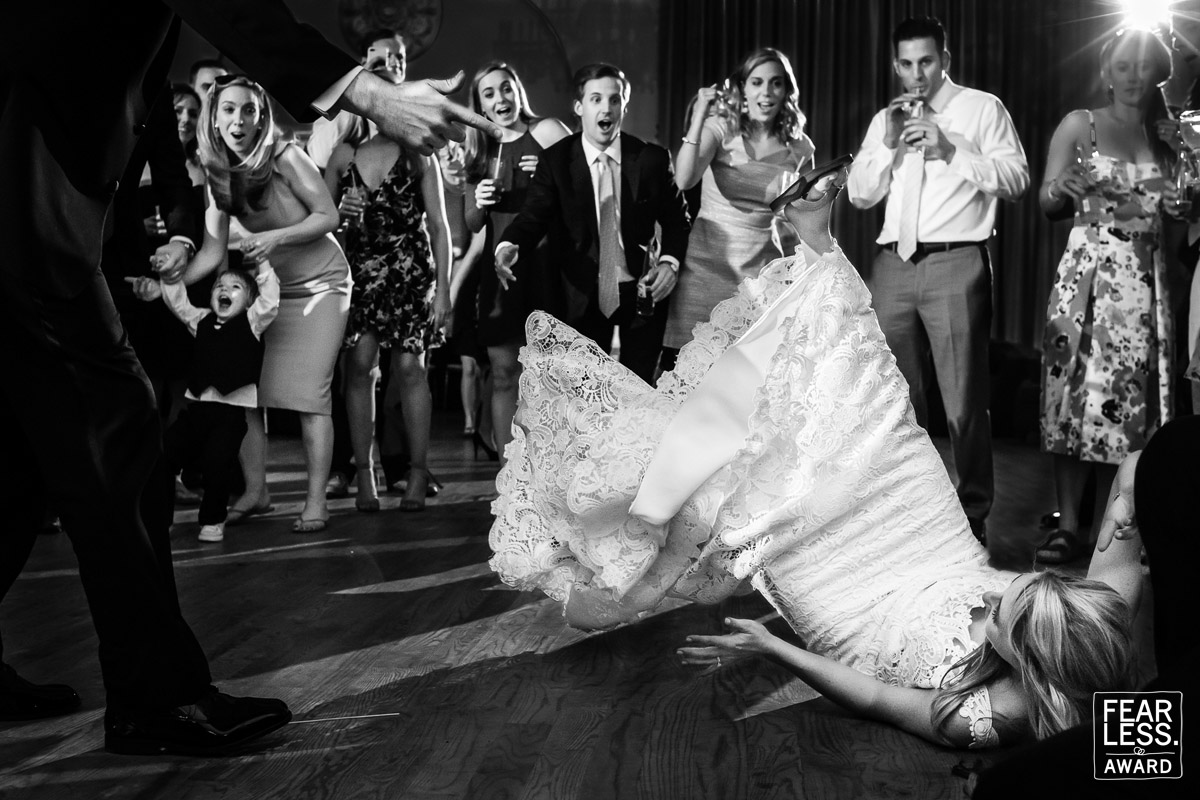
5.) Does it match the rest of the photographers portfolio? When scrolling through the photographers portfolio, if you’re seeing mostly portraits and clearly staged moments, when in doubt, I tend to err on the side of whatever I’m looking at is probably staged also. It’s definitely not a general rule, but if you apply the other four criteria and still aren’t sure, it’s something to consider. For example, this cake photo has the background mostly blacked out which might have me initially question it, but rule number two regarding expressions and my body of work as a whole are good assurances that this was a real moment in time.
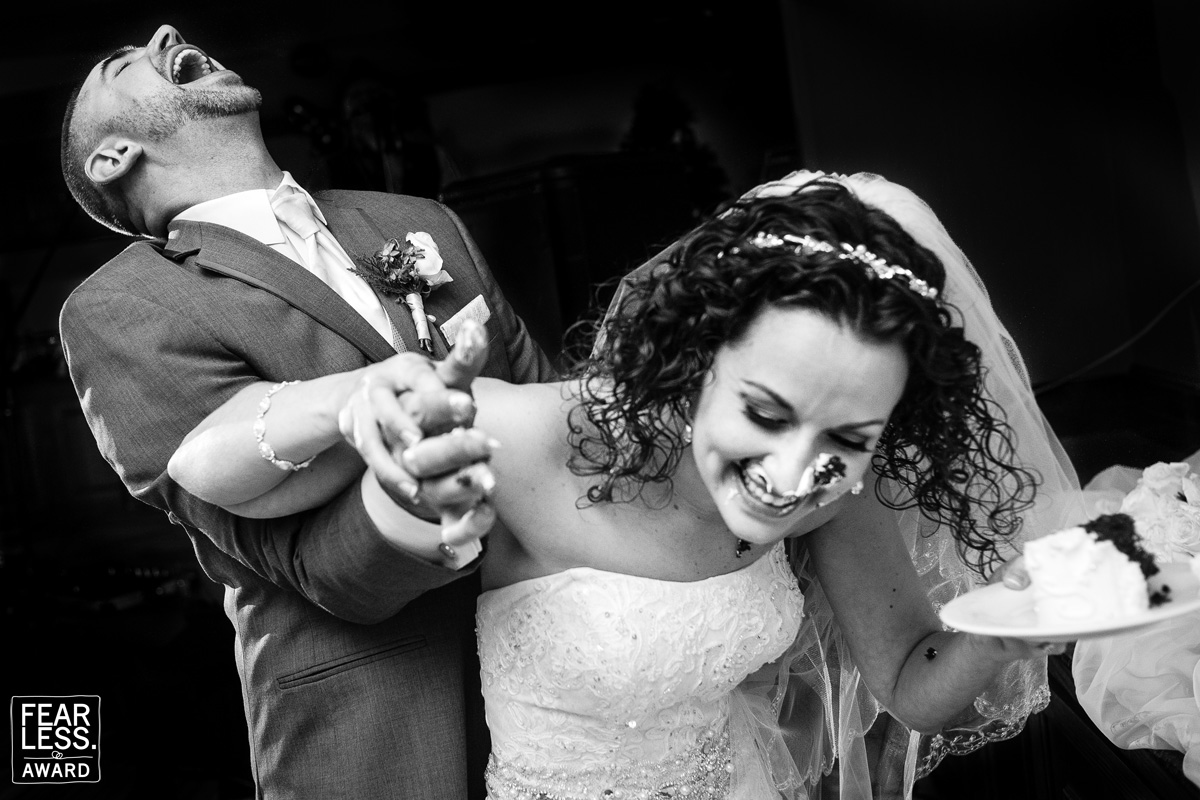
Finally, a good example of applying these criteria is this photo of a flower girl running over a ring bearer that I like to call “ring-bearer roadkill.” In theory, the idea of it is so wild it seems like it might have been manufactured by the photographer, so let’s apply the criteria. 1.) I’ve never seen this before, and it’s very close to being in the category of “You can’t come up with this sh*t.” so I’d say that’s a check. 2.) The ring bearer is clearly ACTUALLY crying – if he’s a professional actor at two years old, let’s all give him our money now! The flower girl ALSO looks like she’s just discovering what happening, and the parent is in a position to be reaching in to help the child being run over. Big check for expressions. 3.) The background is pretty clean, but there is still a stroller back there that makes it less than totally perfect. 4.) The red carpet and the wooden cross in the background clearly indicate this took place in a church and the ring pillow on top of the car also shows the real-life timing of the event at the ceremony so another check. 5.) I do have many similar types of pure documentary images in my portfolio and only a handful of staged ones. That’s the final check – this image is definitely of a real-life candidly captured moment.
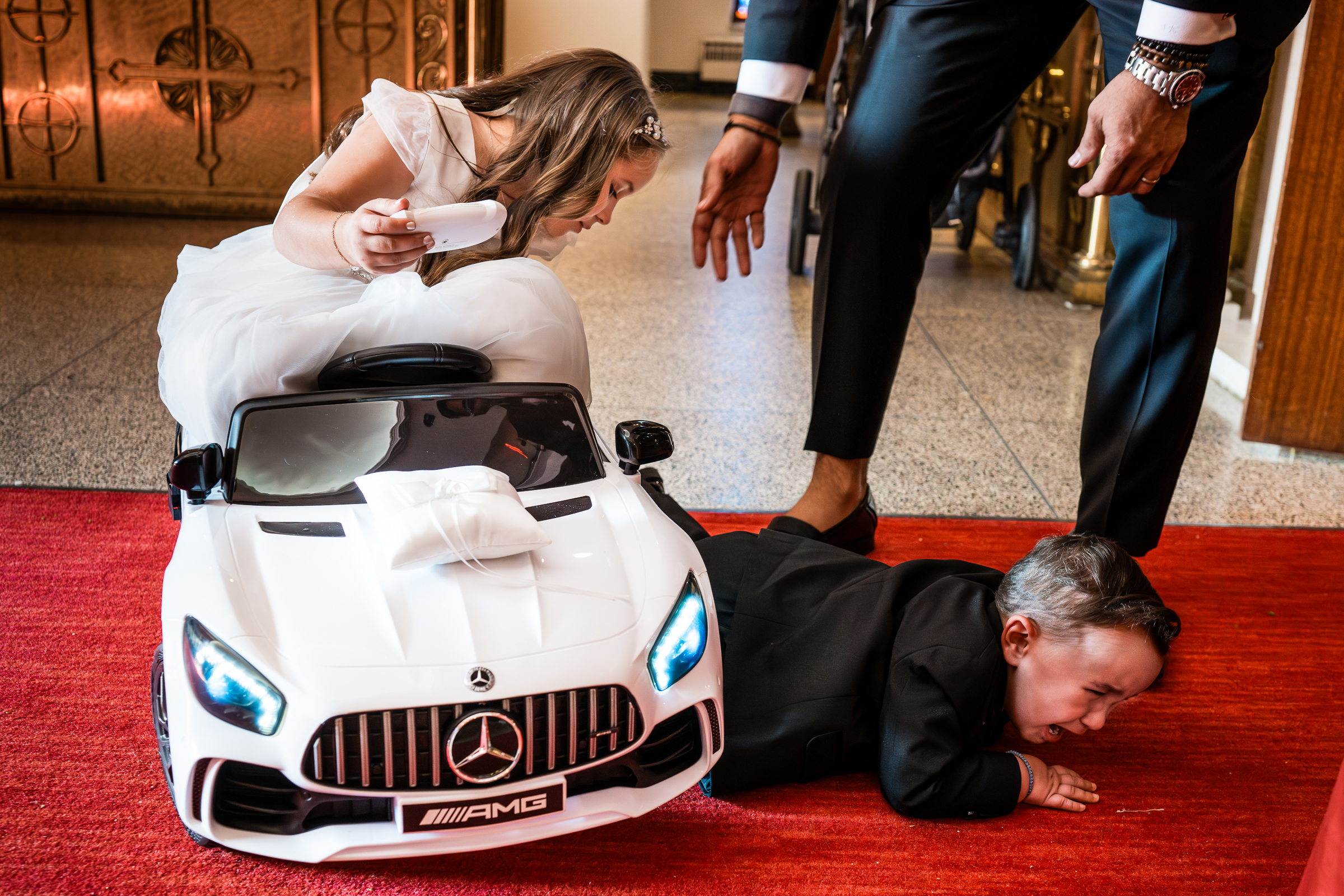
So those are my five “Go-To” criteria for telling real moments from staged ones, AND an example of how to apply these theories! It’s definitely not a perfect science, but I hope it helps future brides and grooms make important decisions regarding choosing a photographer that’s right for them!

